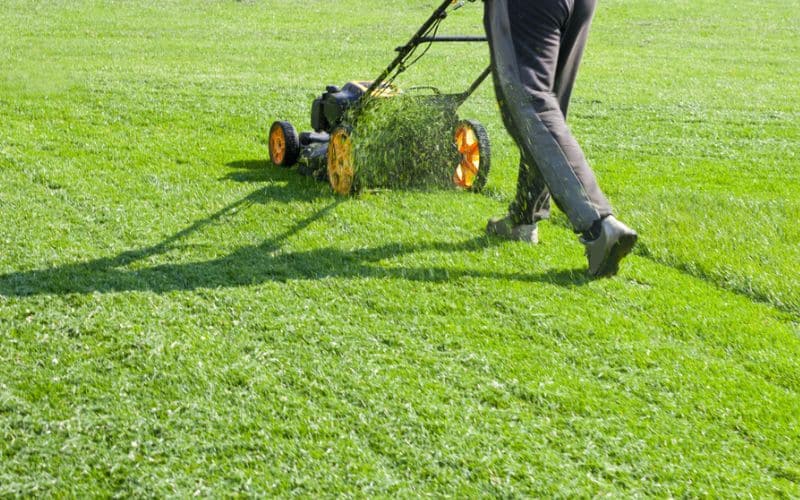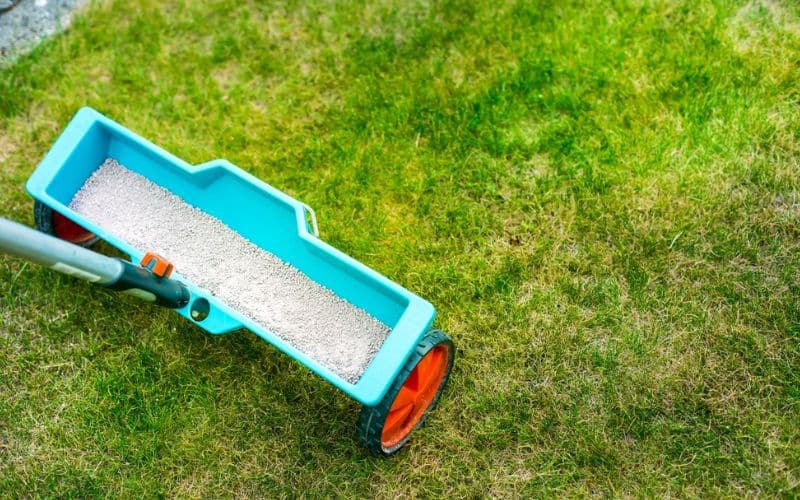
There’s something incredibly satisfying about stepping out onto your own patch of green, knowing that every blade of grass is the result of your hard work and dedication. Lawn care, especially DIY lawn care, can be a rewarding hobby, but it can also be a bit daunting for beginners. Fear not, this comprehensive guide is here to help you navigate the world of lawn care and transform your yard into the envy of the neighbourhood.
Why is Proper Lawn Care Essential for Your Home?
A well-maintained lawn is more than just a pretty sight. It’s an outdoor extension of your home, a place for play, relaxation, and connection with nature. Proper lawn care is essential for maintaining the health and beauty of this valuable outdoor space. A healthy lawn can also increase your property value, reduce soil erosion, and even help cool your home in the summer.
Choosing the Best Type of Grass for Your Lawn: What You Need to Know
Not all grass is created equal. Different types of grass thrive in different conditions, and choosing the right type for your lawn can make all the difference in your lawn care journey. Factors to consider include your local climate, the amount of sunlight your lawn receives, and the type of soil in your yard. Conducting a soil test can provide valuable information about your soil’s pH and nutrient levels, helping you choose the best grass type for your lawn.

How to Mow Your Lawn Like a Pro: Tips and Techniques
Mowing might seem like a straightforward task, but there’s more to it than meets the eye. The way you mow can significantly impact the health of your grass. Here are a few tips:
- Mow when the grass is dry: Wet grass can clog your mower and cause uneven cuts.
- Don’t cut too short: Cutting your grass too short can stress it and make it more susceptible to pests and diseases. As a general rule, never remove more than one-third of the grass blade at a time.
- Keep your mower blades sharp: Dull blades can tear the grass, leaving it with jagged edges that brown over time.
- Change your mowing pattern: Mowing in the same direction every time can cause the grass to lean in the direction you mow and result in uneven growth.
The Best DIY Lawn Mower Maintenance Tips
A well-maintained lawn mower is key to efficient and effective lawn care. Regularly check your mower’s oil level, air filter, and blades. Sharpen the blades as needed for clean cuts, and replace the oil and air filter at least once a season to keep your mower running smoothly.
What is Aeration and Why Should You Aerate Your Lawn?
Aeration involves perforating the soil with small holes to allow air, water, and nutrients to penetrate the grass roots. This helps the roots grow deeply and produce a stronger, more vigorous lawn. The main reason for aerating is to alleviate soil compaction, which can prevent proper circulation of air, water, and nutrients within the soil. Aeration can be done with a simple garden fork, or for larger lawns, an aerator can be rented from most garden centers.

How to Choose and Use Fertilizers for Your Lawn
Fertilizers provide your grass with the nutrients needed for healthy growth. The best fertilizer for your lawn depends on the type of grass you have and the nutrients your soil needs. A soil test can help determine these needs. When applying fertilizer, follow the package instructions to avoid over-fertilization, which can harm your grass and the environment.
Pre-Emergent Herbicides: The Secret to Weed-Free Lawns
Weeds can be a major headache for any lawn enthusiast. Pre-emergent herbicides offer a solution by preventing weed seeds from germinating. Timing is crucial when using these products – they should be applied in early spring before the weeds start to grow.
Do-It-Yourself Lawn Care: Is It Right for You?
DIY lawn care can be a rewarding and cost-effective way to maintain your lawn. However, it does require a time commitment and a willingness to learn. If you enjoy working outdoors and don’t mind getting your hands dirty, DIY lawn care might be the perfect fit for you.
How to Evaluate DIY Lawn Care Products: A Comprehensive Guide
With so many products on the market, choosing the right ones for your lawn can be overwhelming. When evaluating DIY lawn care products, consider factors like the type of grass you have, the specific issues you’re trying to address, and the product’s environmental impact. Reading reviews and asking for recommendations can also be helpful.
Subscription Services for Lawn Care: Are They Worth It?
For those who lack the time or desire for DIY lawn care, subscription services can be a convenient alternative. These services deliver customized lawn care products to your door on a regular schedule, taking the guesswork out of lawn maintenance. However, they can be more expensive than DIY options, and they may not be necessary for all lawns.
The Ultimate Care Program for Your Lawn: A Step-by-Step Guide
Creating the perfect lawn doesn’t happen overnight, but with patience, dedication, and the right care program, you can achieve a lawn that not only looks great but is healthy and resilient. Remember, the key to successful lawn care is understanding your lawn’s specific needs and addressing them in a timely and effective manner.
In conclusion, here are the key takeaways from our comprehensive guide to DIY lawn care:
- Understand the importance of lawn care: A well-maintained lawn enhances your home’s curb appeal, provides a space for outdoor activities, and can even increase your property value.
- Choose the right type of grass: Different grass types thrive in different conditions. Conduct a soil test to understand your lawn’s needs and choose the best grass type accordingly.
- Mow properly: Mow when the grass is dry, don’t cut too short, keep your mower blades sharp, and change your mowing pattern regularly.
- Maintain your lawn mower: Regularly check and maintain your mower’s oil level, air filter, and blades for efficient mowing.
- Aerate your lawn: Aeration helps alleviate soil compaction, allowing air, water, and nutrients to reach the grass roots.
- Use fertilizers wisely: Choose a fertilizer that suits your grass type and soil needs. Always follow the package instructions when applying.
- Consider pre-emergent herbicides: These can be used in early spring to prevent weed seeds from germinating.
- Evaluate DIY lawn care products: Choose products based on your lawn’s specific needs and the product’s environmental impact.
- Consider lawn care subscription services: These can be a convenient alternative for those who lack the time or desire for DIY lawn care.
- Follow a care program: Understand your lawn’s specific needs and address them in a timely and effective manner.
Remember, DIY lawn care is a journey that requires patience, dedication, and a willingness to learn. But the reward—a beautiful, healthy lawn that you’ve nurtured with your own two hands—is well worth the effort. Happy gardening!
Colin Macmillan is a seasoned entrepreneur and the CEO of Riverwood Landscape, a leading landscaping company based in Canada. He has been at the helm of the company since leaving high school, demonstrating his strong leadership skills and business acumen.
Colin’s expertise lies in various aspects of landscaping, including lawn care, interlocking, sod installation, and commercial maintenance. His hands-on approach and dedication to the craft have been instrumental in building Riverwood Landscape into a reputable brand.
One of his most notable achievements is the creation of a successful landscape franchise that services multiple locations. This accomplishment underscores his strategic thinking and ability to scale operations effectively.
Colin has also had the privilege of working with Guelph Hospital for landscaping and maintenance, a testament to the trust and reliability that his company has earned over the years.
His professional mission is to offer the best services and experiences for customers, a goal that he tirelessly pursues. Colin’s commitment to excellence and customer satisfaction continues to drive the growth and success of Riverwood Landscape.








